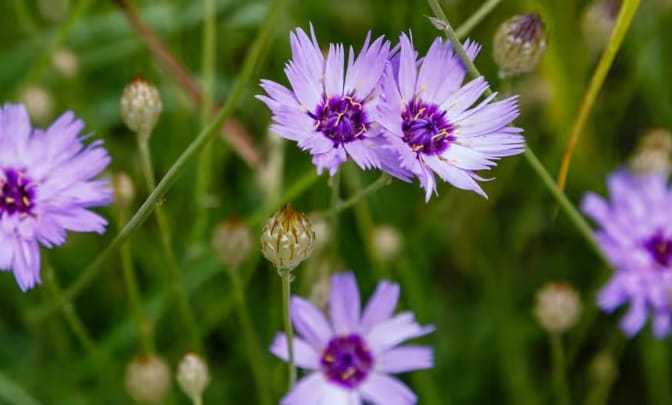The bright blue, Cornflower like blooms of Cupid’s Dart will appear continuously, from early to late summer, peaking in mid-summer.
Each papery blue petal has a fine silvery stripe through the centre. Plants are narrow and upright, with sparse foliage. Single specimens do not make much of a show, so plant three or five in a group to make a better display in your garden.
Plant in full sun, such as in a south or west facing position in well-draining soil.
They look lovely when paired with with any grey or silver leafed plants, such as artemisia and Stachys byzantina, which enjoy similar growing conditions.
Well known for attracting bees, butterflies and other pollinators, Cupid Dart has nectar pollen-rich flowers.
Deadhead regularly to encourage more flowers to form. Towards the end of the season let the seed heads develop and ripen, as these may go on to produce more plants in subsequent years.
Showcased in borders, beds and cottage gardens, Cupid’s Dart provides a lovely display of cut flowers too.
Cupid’s Dart – catananche – is derived from its use by the early Greeks and Romans to make love potions!





